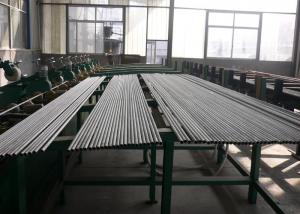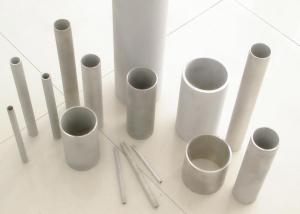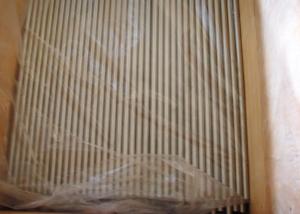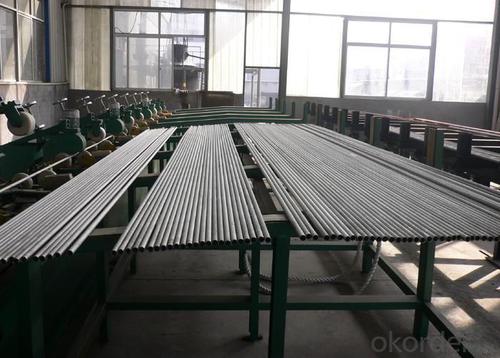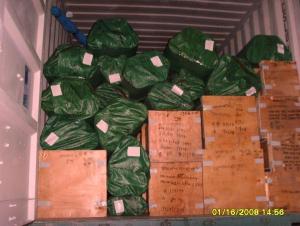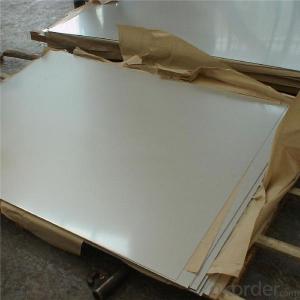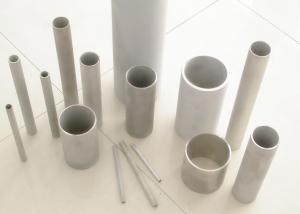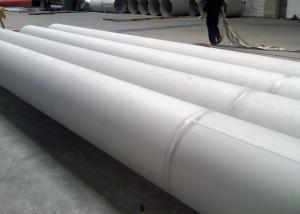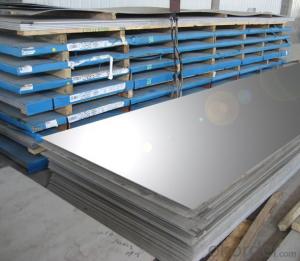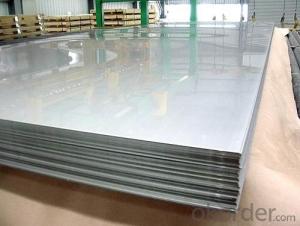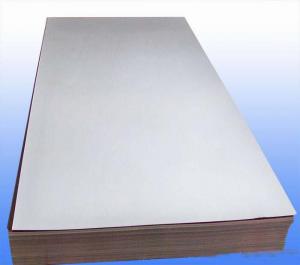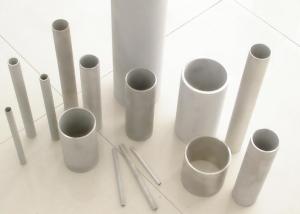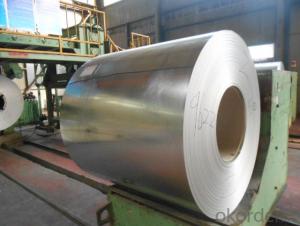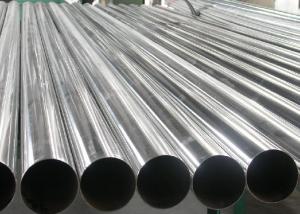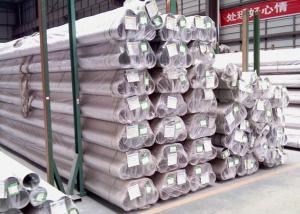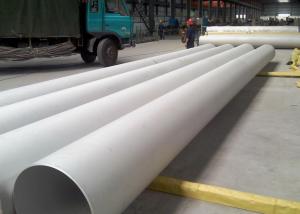304L Stainless Steel Seamless Pipe
- Loading Port:
- China Main Port
- Payment Terms:
- TT or LC
- Min Order Qty:
- 5 Tons m.t.
- Supply Capability:
- 1000 Tons Per Month m.t./month
OKorder Service Pledge
OKorder Financial Service
You Might Also Like
Stainless Steel Seamless Pipe
APPLICATION:
Construction industry.
Chemical industry
Water tube
Pulp&Paper making industry
Heat exchanger tube,boiler tube,condenser tube,etc.
Available size range of Stainless Steel Seamless Pipe
|
OUTSIDE DIAMETER |
WALL THICKNESS | ||||||||
|
INCH |
MM |
Sch10 |
Sch40 |
STD |
Sch80 |
XS |
Sch160 |
XXS | |
|
1/8" |
10.29 |
1.24 |
1.73 |
1.73 |
2.41 |
2.41 |
- |
- | |
|
1/4" |
13.72 |
1.65 |
2.24 |
2.24 |
3.02 |
3.02 |
- |
- | |
|
3/8” |
17.15 |
1.65 |
2.31 |
2.31 |
3.20 |
3.20 |
- |
- | |
|
1/2" |
21.34 |
2.11 |
2.77 |
2.77 |
3.73 |
3.73 |
4.78 |
7.47 | |
|
3/4 " |
26.67 |
2.11 |
2.87 |
2.87 |
3.91 |
3.91 |
5.56 |
7.82 | |
|
1'' |
33.40 |
2.77 |
3.38 |
3.38 |
4.55 |
4.55 |
6.35 |
9.09 | |
|
1.1/4" |
42.16 |
2.77 |
3.56 |
3.56 |
4.85 |
4.85 |
6.35 |
9.70 | |
|
1.1/2'' |
48.30 |
2.77 |
3.68 |
3.68 |
5.08 |
5.08 |
7.14 |
10.15 | |
|
2" |
60.30 |
2.77 |
3.91 |
3.91 |
5.54 |
5.54 |
8.74 |
11.07 | |
|
2 1/2" |
73.03 |
3.05 |
5.16 |
5.16 |
7.01 |
7.01 |
9.53 |
14.02 | |
|
3" |
88.90 |
3.05 |
5.49 |
5.49 |
7.62 |
7.62 |
11.13 |
15.24 | |
|
3 1/2” |
101.60 |
3.05 |
5.74 |
5.74 |
8.08 |
8.08 |
- |
- | |
|
4'' |
114.30 |
3.05 |
6.02 |
6.02 |
8.56 |
8.56 |
13.49 |
17.12 | |
|
5” |
141.30 |
3.40 |
6.55 |
6.55 |
9.52 |
9.52 |
15.88 |
19.05 | |
|
6" |
168.30 |
3.40 |
7.11 |
7.11 |
10.97 |
10.97 |
18.26 |
21.96 | |
|
8'' |
219.08 |
3.76 |
8.18 |
8.18 |
12.70 |
12.70 |
23.01 |
22.23 | |
|
10” |
273.05 |
4.19 |
9.27 |
9.27 |
15.08 |
12.70 |
28.58 |
25.40 | |
|
12" |
323.85 |
4.57 |
9.52 |
9.53 |
17.45 |
12.70 |
33.32 |
25.40 | |
|
14" |
355.60 |
4.78 |
11.13 |
9.53 |
19.05 |
12.70 |
35.71 |
- | |
|
16" |
406.40 |
4.78 |
12.70 |
9.53 |
21.44 |
12.70 |
40.49 |
- | |
|
18" |
457.20 |
4.78 |
14.27 |
9.53 |
23.83 |
12.70 |
45.24 |
- | |
|
20" |
508.00 |
5.54 |
15.09 |
9.53 |
26.19 |
12.70 |
50.01 |
- | |
|
22" |
558.80 |
5.54 |
- |
9.53 |
28.58 |
12.70 |
53.98 |
- | |
|
24" |
609.60 |
6.35 |
17.48 |
9.53 |
30.96 |
12.70 |
59.54 |
- | |
Note : We can also produce the sizes beyond this table according to the requirements of customers
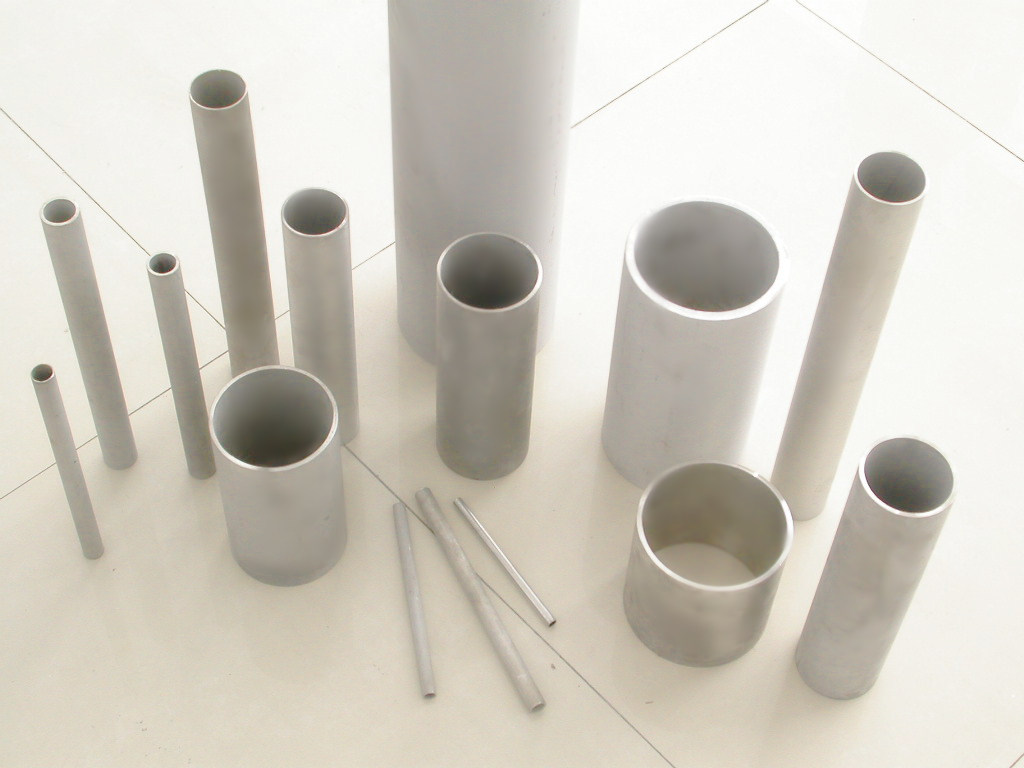
- Q: What are the limitations of using stainless steel sheets?
- There are a number of drawbacks associated with the use of stainless steel sheets. To begin with, stainless steel sheets can be quite costly in comparison to other materials. This can make them less viable for projects or applications with budget constraints. Furthermore, stainless steel sheets are relatively heavy, which can pose challenges in terms of handling and installation, especially when dealing with large quantities. This can lead to increased labor expenses and necessitate the use of additional equipment for transportation and installation purposes. Another issue is that stainless steel sheets are prone to scratching and denting. Despite being renowned for their durability, they are not completely resistant to physical damage. Scratches and dents can compromise both the appearance and functionality of the sheets, particularly in areas with heavy foot traffic or environments prone to potential impacts. Moreover, stainless steel sheets can be susceptible to corrosion, albeit to a lesser degree compared to other metals. Under certain conditions, such as exposure to saltwater or harsh chemicals, rust or other forms of corrosion may develop on stainless steel sheets. Regular maintenance and proper care are necessary to prevent or minimize this problem. Additionally, stainless steel sheets offer limited options when it comes to color. They generally come in shades of silver or gray, which may not be suitable for projects that require specific colors or specific aesthetic preferences. Lastly, stainless steel sheets exhibit poor insulation properties. They conduct heat and cold more effectively than other materials, resulting in greater energy loss and higher heating or cooling costs. In applications where insulation is vital, additional measures or alternative materials may need to be considered. To sum up, while stainless steel sheets possess numerous advantages such as strength, resistance to corrosion, and durability, they also have limitations in terms of cost, weight, vulnerability to damage, corrosion, limited color choices, and poor insulation properties. Understanding these limitations is essential when contemplating the use of stainless steel sheets in various applications.
- Q: Can stainless steel sheets be used for elevator panels?
- Yes, stainless steel sheets can be used for elevator panels. Stainless steel is a durable and corrosion-resistant material, making it suitable for high-traffic areas like elevators. It offers a sleek and modern aesthetic, making it a popular choice for elevator panels in commercial and residential buildings.
- Q: Can stainless steel sheets be used for electrical applications?
- Yes, stainless steel sheets can be used for electrical applications. Stainless steel is an alloy that contains chromium, which makes it highly resistant to corrosion and oxidation. This corrosion resistance is beneficial for electrical applications where the material may be exposed to moisture or harsh environments. Stainless steel sheets can be used in various electrical components such as electrical enclosures, control panels, junction boxes, and electrical connectors. The high strength and durability of stainless steel make it suitable for these applications, providing a reliable and long-lasting solution. Additionally, stainless steel's non-magnetic properties can be advantageous in certain electrical applications where magnetic interference needs to be minimized.
- Q: What is the maximum size available for stainless steel sheets?
- The maximum size of stainless steel sheets depends on various factors, including the supplier's manufacturing capabilities and the customer's specific requirements. Standard sizes for stainless steel sheets can vary based on the thickness and grade of the material. Typically, stainless steel sheets can be obtained in standard sizes ranging from 4 feet by 8 feet (1220mm x 2440mm) to larger dimensions like 5 feet by 10 feet (1524mm x 3048mm). However, it is also possible to find custom sizes or oversized sheets that surpass these dimensions, especially for industrial or specialized purposes. It is important to consider that larger sizes may present additional challenges, such as increased weight and difficulties in handling. Furthermore, the availability of specific sizes may differ among suppliers. Therefore, it is advisable to consult with a stainless steel sheet supplier or manufacturer to ascertain the exact maximum size options they offer.
- Q: What is the corrosion resistance of stainless steel sheets?
- The high corrosion resistance properties of stainless steel sheets are well-known. This is because the alloy contains chromium, which creates a protective oxide layer on the steel's surface. This oxide layer acts as a barrier, preventing oxygen and moisture from reaching the steel underneath. Consequently, stainless steel sheets exhibit remarkable resistance to rust, staining, and corrosion in different environments, including exposure to water, chemicals, and extreme temperatures. The level of corrosion resistance can vary depending on the grade and composition of the stainless steel. In general, higher chromium and nickel content result in better corrosion resistance. Therefore, stainless steel sheets are extensively utilized in industries like construction, automotive, and food processing, where durability and resistance to corrosion are of utmost importance.
- Q: What are the different types of etched patterns available for stainless steel sheets?
- There are several different types of etched patterns available for stainless steel sheets, each offering a unique and visually appealing design. Some of the popular etched patterns include: 1. Diamond Pattern: This pattern features a series of small diamond-shaped indentations etched onto the surface of the stainless steel. It creates a classic and elegant look, often used in architectural applications. 2. Checkerboard Pattern: As the name suggests, this pattern resembles a checkered board, with alternating squares etched onto the stainless steel sheet. It offers a modern and geometric design, commonly used in interior design and decorative applications. 3. Floral Pattern: This pattern incorporates various floral designs etched onto the stainless steel sheet. It adds a touch of elegance and sophistication, often seen in luxury home decor and jewelry. 4. Geometric Pattern: Geometric patterns include a wide range of designs, such as circles, squares, triangles, and other abstract shapes etched onto the stainless steel sheet. These patterns offer a contemporary and artistic look, suitable for both modern and traditional settings. 5. Wave Pattern: This pattern features wavy lines etched onto the stainless steel sheet, creating a sense of movement and fluidity. It is commonly used in architectural projects, giving a dynamic and visually interesting effect. 6. Textured Pattern: Textured patterns involve various textures etched onto the stainless steel sheet, such as brushed, hammered, or linen finishes. These patterns add depth and dimension to the metal, making it ideal for interior design and decorative purposes. 7. Custom Patterns: In addition to the standard etched patterns, there is also the option to create custom patterns based on specific designs or logos. This allows for personalized and unique stainless steel sheets, often used in branding or specialty projects. Overall, the variety of etched patterns available for stainless steel sheets allows for endless possibilities in design and application. Whether it's for architectural, decorative, or industrial purposes, there is a pattern to suit every need and aesthetic preference.
- Q: Can stainless steel sheets be used for kitchen countertops?
- Absolutely, kitchen countertops can indeed be made from stainless steel sheets. The reason stainless steel is such a widely favored option for kitchen countertops is because of its exceptional durability, heat resistance, and hygienic qualities. It possesses a remarkable ability to ward off stains, corrosion, and rust, rendering it an ideal material for high-traffic areas, such as the kitchen. Moreover, stainless steel countertops are effortlessly cleaned and maintained, making them an extremely practical choice for bustling kitchens. Furthermore, the inclusion of stainless steel lends a polished and cutting-edge appearance to the kitchen, rendering it an exceedingly popular choice for both contemporary and industrial-style kitchens.
- Q: Are stainless steel sheets suitable for architectural designs?
- Architectural designs can benefit greatly from the use of stainless steel sheets. This versatile material provides a wide array of advantages for such projects. Its durability and resistance to corrosion make it perfect for both indoor and outdoor applications. Moreover, architects can easily shape and size stainless steel sheets, enabling them to create unique and visually captivating designs. The sleek and modern appearance of stainless steel also enhances the aesthetic appeal of buildings, making it a popular choice in contemporary architecture. Additionally, stainless steel is an environmentally friendly option as it is fully recyclable, contributing to sustainability efforts in architectural designs. In conclusion, stainless steel sheets offer a multitude of benefits that make them highly suitable for architectural projects.
- Q: Can stainless steel sheets be used for heat shields?
- Yes, stainless steel sheets can be used for heat shields. Stainless steel is known for its excellent heat resistance and durability, making it an ideal material for heat shields in various applications.
- Q: How do you remove water spots from stainless steel sheets?
- Achieving water spot-free stainless steel sheets is simple with these steps: 1. Begin by thoroughly cleansing the surface using a mild dish soap and warm water solution. This will eliminate any dirt or grime that might contribute to the presence of water spots. 2. Rinse the sheets with fresh water and dry them completely using a soft cloth or towel. This is crucial to prevent the formation of new water spots during the cleaning procedure. 3. Subsequently, create a mixture of equal parts white vinegar and water. Immerse a clean cloth or sponge into the solution, ensuring to remove any excess liquid. 4. Gently rub the affected areas of the stainless steel sheets with the vinegar solution-soaked cloth or sponge. Make sure to follow the grain of the stainless steel in order to avoid scratching the surface. 5. Once the water spots have been rubbed, rinse the sheets with clean water and thoroughly dry them again using a soft cloth or towel. 6. If the water spots persist, you can attempt using a stainless steel cleaner or polish specifically formulated for eliminating stains and water spots. Follow the instructions provided with the cleaner and test it on a small, inconspicuous area beforehand to ensure it does not harm the stainless steel. Always remember to utilize soft materials and gentle cleaning techniques when dealing with stainless steel to prevent scratching or damaging the surface.
1. Manufacturer Overview
| Location | Zhejiang, China |
| Year Established | 2005 |
| Annual Output Value | Above US$1.6 million |
| Main Markets | Europe, North America. |
| Company Certifications |
2. Manufacturer Certificates
| a) Certification Name | |
| Range | |
| Reference | |
| Validity Period |
3. Manufacturer Capability
| a) Trade Capacity | |
| Nearest Port | Shanghai |
| Export Percentage | 40% |
| No.of Employees in Trade Department | Above 30 people |
| Language Spoken: | English, Chinese |
| b) Factory Information | |
| Factory Size: | Above 5000 square meter |
| No. of Production Lines | Above 6 |
| Contract Manufacturing | OEM Service Offered |
| Product Price Range | Average |
Send your message to us
304L Stainless Steel Seamless Pipe
- Loading Port:
- China Main Port
- Payment Terms:
- TT or LC
- Min Order Qty:
- 5 Tons m.t.
- Supply Capability:
- 1000 Tons Per Month m.t./month
OKorder Service Pledge
OKorder Financial Service
Similar products
Hot products
Hot Searches
Related keywords
